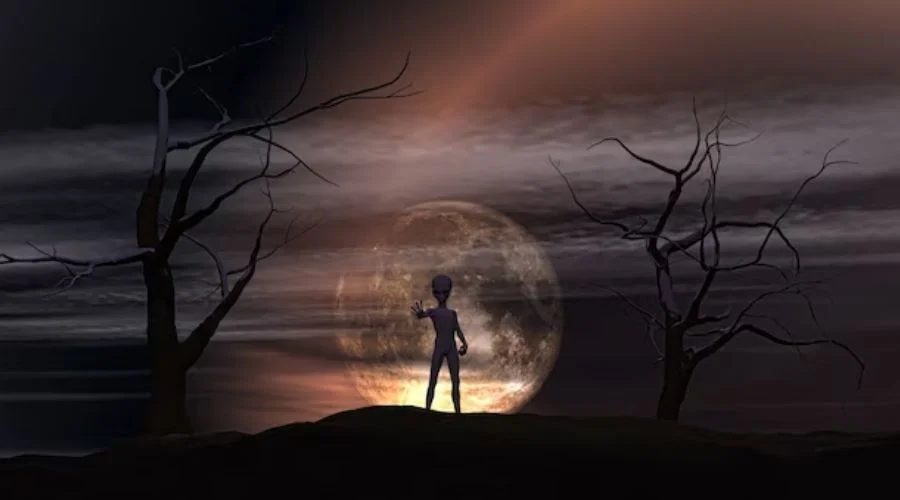Dare to venture beyond the well-trodden paths of traditional tourism and immerse yourself in the enigmatic realm of dark voyeuristic tourism. As the curtain lifts on this clandestine world, prepare to embark on a spine-chilling journey filled with thrills, chills, and heart-pounding excitement. Dark voyeuristic tourism offers a tantalizing glimpse into the underbelly of society, where curious travelers can witness the darker side of human nature and explore the secrets concealed within the shadows. This adrenaline-fueled adventure is not for the faint of heart, but for those seeking to challenge their boundaries and indulge in a truly unique experience. Unveil the hidden world of dark voyeuristic tourism and discover the pulse-quickening allure that awaits, as we guide you through the thrilling and enigmatic haunts that lie just beneath the surface. Are you ready to satisfy your curiosity and embrace the unknown?
The Psychology Behind Dark Tourism
Dark tourism, also known as grief tourism or black tourism, is a phenomenon that has captured the interest of travelers and academics alike. The term refers to the act of visiting sites associated with death, suffering, disaster, or the macabre. It is a curious blend of fascination, horror, and intrigue that draws people to these destinations, seeking to understand and experience the darker side of life.
The psychological motivations behind dark tourism are complex and multifaceted, with some researchers suggesting that it stems from a deep-rooted need to confront our own mortality. By witnessing the remnants of tragedy and suffering, we are forced to confront the reality of death and the fragility of human existence. This can be both a humbling and transformative experience, prompting personal reflection and growth. Others argue that dark tourism is driven by a desire for novelty and the thrill of the unknown, as it provides a break from the mundane and offers a unique, off-the-beaten-path experience.
Another theory posits that dark tourism is fueled by the human tendency towards voyeurism. This is particularly relevant in the context of dark voyeuristic tourism, where visitors engage in covert or clandestine activities to observe the often-taboo aspects of society. In this sense, dark voyeuristic tourism is a form of escapism, allowing individuals to step outside of their everyday lives and immerse themselves in a world that is mysterious, exciting, and altogether different from their own. Ultimately, the psychology behind dark tourism is a complex interplay of curiosity, fear, and fascination, driving individuals to venture beyond their comfort zones and explore the enigmatic fringes of human experience.
Popular Dark Voyeuristic Tourism Destinations
Dark voyeuristic tourism can be found all around the world, with destinations that cater to a wide variety of interests and tastes. Some popular examples include:
Pripyat, Ukraine: Known as the ghost town of Chernobyl, Pripyat is a haunting reminder of the devastating nuclear disaster that occurred in 1986. The town was abandoned overnight and has remained frozen in time, with decaying buildings, personal belongings, and even a rusting amusement park standing as eerie monuments to the tragedy. Visitors can take guided tours through the exclusion zone, witnessing firsthand the haunting desolation and lingering effects of the disaster.
Catacombs of Paris, France: Beneath the bustling streets of Paris lies a labyrinth of tunnels filled with the bones of millions of people. The catacombs were created in the 18th century as a solution to overcrowded cemeteries and have since become a popular attraction for those seeking a macabre and chilling experience. Visitors can wander through the dimly lit passages, surrounded by walls of skulls and bones, and reflect on the fleeting nature of life.
Aokigahara Forest, Japan: Known as the “Sea of Trees,” Aokigahara is a dense, eerie forest at the base of Mount Fuji that has become infamous as a popular destination for suicides. Visitors are drawn to the forest’s haunting beauty and somber atmosphere, with many curious about the tragic stories that have unfolded within its depths. Guided tours are available, allowing travelers to explore the forest while learning about its dark history and the supernatural legends that surround it.
Slums of Rio de Janeiro, Brazil: Rio de Janeiro is home to some of the largest and most notorious slums, or favelas, in the world. Dark tourism in these areas often involves “slum tours,” where visitors are taken on guided walks through the narrow streets and alleys, witnessing the harsh living conditions and poverty that many residents face. This form of dark voyeuristic tourism has faced criticism for exploiting the suffering of others, drawing attention to the ethical concerns that surround this type of travel.
Ethical Considerations in Dark Tourism
Dark tourism raises a number of ethical questions and concerns, particularly when it comes to voyeuristic practices. Critics argue that this form of tourism is exploitative, capitalizing on the suffering and misfortune of others for the sake of entertainment. This can lead to the commodification of tragedy, with sites of disaster or death being transformed into tourist attractions that romanticize or sensationalize the events that took place.
In the case of dark voyeuristic tourism, there is the added issue of consent and privacy. When visitors engage in clandestine activities to observe the underbelly of society, they often do so without the knowledge or permission of those being observed. This raises concerns about the power dynamics and ethical implications of voyeuristic practices, as well as questions about the impact on the individuals and communities involved.
Another ethical consideration is the potential for negative impacts on local communities, particularly in the context of slum or disaster tourism. Critics argue that these tours can perpetuate harmful stereotypes and further marginalize vulnerable populations, with little benefit to the individuals or communities themselves. It is important for travelers to be aware of these concerns and to consider the potential consequences of their actions when engaging in dark voyeuristic tourism.
The Role of Media in Promoting Dark Voyeuristic Tourism
Media plays a significant role in shaping public perceptions of dark tourism and driving interest in these destinations. Films, television shows, and documentaries often provide a window into the dark and mysterious world of these sites, sparking curiosity and fascination among viewers. This can lead to a surge in demand for dark tourism experiences, as people seek to explore the places and stories that have captured their imaginations.
In some cases, the media can contribute to the commodification of tragedy by sensationalizing or romanticizing the events that took place. This can result in a skewed or distorted understanding of the site’s history, with visitors often more focused on the thrill of the experience than on the deeper meaning or significance of the location. It is important for travelers to critically engage with the media and to seek out accurate and nuanced information about the sites they choose to visit.
On the other hand, the media can also play a positive role in promoting responsible dark tourism practices and raising awareness of the ethical concerns that surround this type of travel. Documentaries and investigative journalism can shed light on the issues and challenges faced by local communities, encouraging travelers to approach dark tourism in a more informed and thoughtful manner.
Navigating Safety and Legal Concerns
Safety and legal concerns are important considerations for travelers engaging in dark voyeuristic tourism. Many of these destinations are inherently risky, with potential hazards ranging from crumbling buildings and unstable structures to radiation exposure or criminal activity. It is essential for visitors to be aware of the risks involved and to take appropriate precautions to protect their safety and well-being.
In some cases, dark tourism destinations may be off-limits or heavily regulated by local authorities. For example, the exclusion zone surrounding the Chernobyl disaster site is only accessible through guided tours, and visitors must obtain a special permit to enter the area. It is important for travelers to familiarize themselves with the local laws and regulations governing these sites and to respect any restrictions that may be in place.
When engaging in dark voyeuristic tourism, it is essential to be mindful of the potential legal and ethical implications of one’s actions. Voyeuristic activities can sometimes lead to trespassing, invasion of privacy, or other violations of the law, making it important for travelers to consider the potential consequences of their actions and to exercise discretion and respect for the individuals and communities involved.
The Impact of Dark Tourism on Local Communities
Dark tourism can have both positive and negative impacts on local communities, depending on the nature of the site and the manner in which it is managed. On one hand, dark tourism can generate economic benefits for the community through the creation of jobs and the influx of tourism dollars. This can help to support local businesses and improve the quality of life for residents.
In some cases, dark tourism can also contribute to the preservation and conservation of historically or culturally significant sites. For example, the Auschwitz-Birkenau concentration camp in Poland is now a museum and memorial site, attracting millions of visitors each year. The revenue generated from tourism helps to fund the site’s ongoing maintenance and preservation, ensuring that the memory of the Holocaust is preserved for future generations.
On the other hand, dark tourism can also have negative consequences for local communities, particularly when it comes to voyeuristic practices. As mentioned previously, slum tours and other forms of voyeuristic tourism can exacerbate existing social inequalities and perpetuate harmful stereotypes, potentially further marginalizing vulnerable populations. It is important for travelers to be aware of these potential impacts and to approach dark tourism in a responsible and respectful manner.
Responsible Dark Tourism Practices
As interest in dark tourism continues to grow, there is an increasing need for responsible and ethical practices within the industry. This involves striking a balance between the desire for thrilling and unique experiences and the need to respect the history, culture, and communities associated with these destinations.
Some key principles of responsible dark tourism include:
- Educating oneself about the history and context of the site, to ensure a deeper understanding and appreciation of the events that took place.
- Respecting local laws, customs, and restrictions, and adhering to any guidelines or safety precautions that may be in place.
- Engaging with local communities in a respectful and equitable manner, ensuring that tourism dollars are used to support local businesses and initiatives.
- Being mindful of the potential ethical implications of voyeuristic tourism and avoiding activities that may exploit, marginalize, or harm individuals or communities.
- Promoting responsible and sustainable tourism practices, such as reducing waste, conserving resources, and minimizing one’s ecological footprint.
By adhering to these principles, travelers can help to ensure that dark tourism remains a viable and meaningful form of travel that benefits both visitors and local communities alike.
The Future of Dark Voyeuristic Tourism
As the popularity of dark tourism continues to grow, it is likely that new destinations and experiences will continue to emerge, catering to the evolving interests and tastes of travelers. Advances in technology may also play a role in shaping the future of dark voyeuristic tourism, with virtual reality and other immersive technologies offering the potential for new and innovative ways to explore the darker side of human experience.
However, the future of dark voyeuristic tourism will also be shaped by the industry’s ability to address and navigate the complex ethical concerns that surround this type of travel. As travelers become more aware of the potential impacts of their actions and demand for responsible tourism practices grows, the industry will need to adapt and evolve to ensure that dark tourism remains a sustainable and ethical form of travel.
Conclusion
Dark voyeuristic tourism offers a thrilling and enigmatic journey into the hidden corners of human experience, providing travelers with the opportunity to challenge their boundaries and explore the darker side of life. As we have seen, this form of tourism raises a number of ethical, legal, and safety concerns that must be carefully considered by both travelers and the industry itself. By promoting responsible and sustainable practices, and by engaging with these destinations in a thoughtful and informed manner, dark tourism can continue to provide a unique and transformative experience for those who dare to venture beyond the well-trodden paths of traditional tourism. Are you ready to embrace the unknown and satisfy your curiosity?













